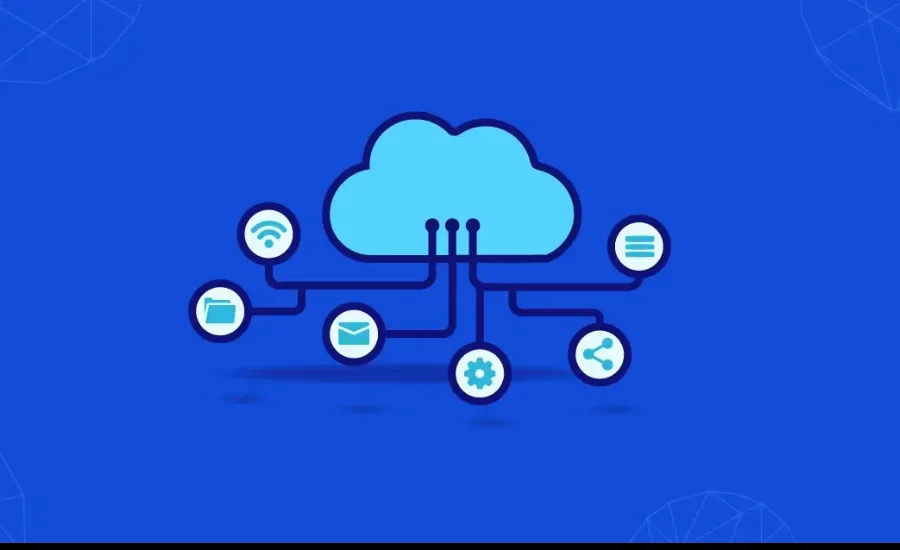The term 10.10.60.2120 has recently gained prominence, particularly in sectors where network protocols and digital communication play a critical role. To grasp its relevance, it’s essential to explore how this concept operates, the underlying technology, and the wide range of its applications across different industries.
What is 10.10.60.2120?
The term 10.10.60.2120 refers to a private IP address, commonly used within local networks (LANs) for communication between devices without requiring access to the public internet. IP addresses like 10.10.60.2120 belong to the range of private addresses reserved under the Internet Protocol version 4 (IPv4) system, specifically within the block 10.0.0.0 to 10.255.255.255. These addresses play an essential role in managing communication between devices in homes, offices, and organizational networks, facilitating efficient data transfer while remaining secure from external access.
Private IP addresses, such as 10.10.60.2120, are not publicly routable, which means they cannot be reached directly via the internet. This distinction makes them especially useful for internal networking, where devices such as printers, routers, and computers need to communicate with each other without exposing sensitive data or systems to the wider web. This enhances both the security and efficiency of network management, ensuring smooth operation in environments where local data sharing is critical.
How 10.10.60.2120 Evolved
Historically, the use of private IP addresses like 10.10.60.2120 arose from the growing need to efficiently manage limited IPv4 addresses, while also improving network security. As the internet expanded, the pool of available public IP addresses shrank, making it necessary to create reserved address spaces for internal use. The introduction of private IP blocks like the 10.0.0.0 range helped organizations expand their internal network infrastructure without contributing to the depletion of public IPv4 addresses.
10.10.60.2120, being part of this range, became increasingly valuable for industries that needed robust internal networks capable of handling large amounts of data traffic. With the advent of more complex digital operations, businesses, institutions, and even residential setups started to rely heavily on private IP addresses to optimize their internal data flow. In particular, sectors like healthcare, manufacturing, and finance have seen immense benefits from adopting such protocols to ensure secure, fast, and reliable internal communications.
How Does 10.10.60.2120 Work?
Understanding the workings of a private IP address like 10.10.60.2120 requires diving into the basic principles of internal network communication. In a typical local network, devices are assigned private IP addresses to facilitate direct data transfers between them. These IPs, including 10.10.60.2120, are assigned either manually by a network administrator or automatically through the Dynamic Host Configuration Protocol (DHCP), a service that automatically assigns an available IP address from the router’s pool to each device connected to the network.
When a device, such as a computer or a printer, is connected to the network, the router assigns a private IP like 10.10.60.2120. This address allows the device to communicate with others on the same network, creating an efficient and isolated data exchange environment. Importantly, data sent between devices using private IPs does not travel over the public internet, providing additional layers of security.
Another critical feature of 10.10.60.2120 is its ability to support both static and dynamic IP configurations. In some cases, devices that need a permanent, unchanging address for ongoing communication (like servers or network printers) are assigned static IP addresses. For other devices that may connect intermittently, a dynamic IP like 10.10.60.2120 can be reassigned as needed, ensuring flexibility and efficient use of network resources.
Understanding the Structure of 10.10.60.2120

The IP address 10.10.60.2120 falls within the range of private IP addresses, specifically from the block 10.0.0.0 to 10.255.255.255, which is part of the IPv4 addressing scheme. Private IP addresses, such as this one, are not meant for direct access over the internet but are instead designed for internal network use.
The specific structure of 10.10.60.2120 breaks down into:
- 10 – The first octet identifies the network segment, specifically the range reserved for private networks. The “10” block is widely used by many organizations because it offers one of the largest pools of private IP addresses.
- 10 – The second octet is typically used to define smaller sub-networks or departments within an organization. This makes it easier to manage large networks.
- 60 – The third octet can be used to assign individual devices or clusters of devices within a sub-network.
- 2120 – This portion of the address is non-standard for IPv4, and 10.10.60.2120 might be a typo or a misrepresentation, as IPv4 addresses usually contain four octets with values ranging from 0 to 255. If intended for internal identification purposes, “2120” could represent a unique device identifier or virtual machine identifier in a non-standard context.
Use in Subnetting and VLANs
Private IP addresses like 10.10.60.2120 are frequently used in subnetting and Virtual Local Area Networks (VLANs). Subnetting allows network administrators to divide a large network into smaller, more manageable sub-networks or segments. This can improve security and performance by isolating sections of the network.
For example, in a large office network, different departments (HR, IT, Marketing) can be assigned different ranges within the 10.10.x.x block, and 10.10.60.2120 could be part of a subnet dedicated to one department or function. Subnetting reduces broadcast traffic and creates boundaries for where data flows, which improves overall network performance.
Similarly, VLANs allow logical grouping of devices within the same network, even if they are physically located on different subnets. A VLAN using 10.10.60.2120 might be part of a VLAN for security devices, ensuring isolated and encrypted communication between firewalls, intrusion detection systems, and other network security appliances.
Network Address Translation (NAT) and 10.10.60.2120
One of the key reasons why addresses like 10.10.60.2120 are effective in local area networks is due to the use of Network Address Translation (NAT). NAT is a technology that allows devices on a private network to communicate with external networks (like the internet) while keeping their private IP addresses hidden.
In this case, 10.10.60.2120 could belong to a server or workstation within a private corporate network. When this device sends data to the internet, NAT translates the private IP address to a public IP address assigned by the organization’s internet service provider (ISP). This ensures that external devices only see the public IP, not the internal 10.10.60.2120 address, enhancing both privacy and security.
NAT also enables the reuse of private IP addresses, allowing millions of organizations worldwide to use the same 10.x.x.x blocks internally without conflict.
Benefits of Scalability Using 10.10.60.2120
The use of private IP addresses like 10.10.60.2120 supports the scalability of large networks. Organizations that are growing in size or expanding their infrastructure can allocate a vast range of private IPs without needing additional public IP resources. The 10.0.0.0/8 block offers a massive pool of addresses, making it ideal for large enterprises or multi-site networks.
For example, an organization with multiple branch offices could use IP ranges like 10.10.60.x for one branch, and another branch might use 10.10.70.x. Even as the organization grows, new devices, departments, and sub-networks can easily be assigned addresses from the private 10.x.x.x range without requiring additional public IP addresses.
10.10.60.2120 and Internet Protocol Security (IPsec)

Although 10.10.60.2120 is used within a private network, it may also be involved in IPsec (Internet Protocol Security) implementations. IPsec is a suite of protocols used to encrypt and authenticate IP packets, ensuring secure communication over potentially unsecured networks. Within a private network, IPsec can add an extra layer of encryption to data packets being sent between devices using private IP addresses like 10.10.60.2120.
For instance, in an organization with sensitive internal data or compliance requirements (like healthcare or finance), IPsec could be implemented between servers, databases, or security appliances, ensuring that any data exchanged over the internal network is encrypted and protected from internal threats.
Common Use Cases for 10.10.60.2120 in Corporate Networks
Within a corporate network, private IP addresses like 10.10.60.2120 have several use cases:
- Device Addressing: 10.10.60.2120 could be the static IP of an important server, such as a file server, database server, or even a security appliance like a firewall.
- DHCP Assignments: In a dynamic setup, 10.10.60.2120 could be an IP dynamically assigned by a DHCP server to a device like a workstation, printer, or VoIP phone.
- Network Segmentation: 10.10.60.2120 could belong to a segment dedicated to a particular department or function, ensuring that traffic is isolated and organized efficiently within a specific subnet or VLAN.
- Cloud or Data Center Use: In private cloud environments, addresses like 10.10.60.2120 are assigned to virtual machines (VMs) or containers that run various applications or databases internally, optimizing resource allocation and security.
Role in Wireless and IoT Networks
10.10.60.2120 can also play an important role in wireless networks or Internet of Things (IoT) setups. In a corporate environment, a private IP such as 10.10.60.2120 may be assigned to wireless access points (APs) or IoT sensors. These devices often require internal communication to function, and using a private IP range allows the organization to manage thousands of wireless or IoT devices efficiently.
For example, in a smart building or factory, IoT devices like temperature sensors, smart lighting systems, or security cameras could be assigned addresses from the 10.10.60.x range. Using this private IP block keeps the internal IoT traffic secure and ensures smooth communication between devices without exposing them to external networks.
Key Features of 10.10.60.2120
Several features make 10.10.60.2120 an ideal choice for internal networking. One of its primary advantages is its inherent security due to its non-public nature. Since devices using private IP addresses are not accessible from outside the network, they are shielded from many external threats like unauthorized access or cyberattacks. This feature is crucial for environments where sensitive information is regularly exchanged, such as financial institutions, healthcare systems, and research facilities.
Additionally, 10.10.60.2120 allows for efficient data routing within large networks. By keeping communication localized within the network, it reduces unnecessary traffic over public IP addresses, optimizing bandwidth usage and improving overall network performance. This makes it particularly valuable in large enterprises or organizations where hundreds or even thousands of devices need to communicate without overwhelming the public internet.
Applications of 10.10.60.2120 in Various Industries

The application of private IP addresses like 10.10.60.2120 is not limited to one specific industry. In fact, many sectors have found innovative ways to integrate such IPs into their network operations, enhancing both productivity and security.
In the manufacturing sector, for example, 10.10.60.2120 is used to manage real-time communication between machinery, sensors, and control systems. By utilizing a private IP system, manufacturers can monitor and control processes in real-time without exposing their networks to the risks associated with public internet connectivity. This leads to increased efficiency, reduced downtime, and improved operational oversight.
In the healthcare industry, private IP addresses like 10.10.60.2120 facilitate secure data sharing between hospitals, clinics, and other medical institutions. Patient data, which is often highly sensitive, can be transmitted securely over internal networks without risk of exposure to external threats. Additionally, healthcare providers can use this IP structure to streamline access to electronic medical records (EMRs) and diagnostic tools, improving patient care and reducing wait times for critical information.
For cloud computing and data centers, 10.10.60.2120 helps manage massive amounts of internal traffic, ensuring efficient communication between servers without the need for public IP addresses. Private IPs help scale cloud services by providing a reliable way for virtual machines and applications to communicate securely, enabling faster data processing and optimized performance for cloud services.
Advantages of 10.10.60.2120
There are several advantages to using 10.10.60.2120, especially for businesses and organizations with complex networking needs. The first major benefit is increased security. Since private IP addresses are not accessible from the public internet, they provide an additional layer of protection against cyberattacks. This is especially important for companies dealing with sensitive data, such as financial institutions, where any breach could result in significant losses.
Another key advantage is efficiency. By keeping internal data exchanges within the local network, organizations reduce traffic on their public-facing systems. This not only speeds up data transfer within the organization but also frees up bandwidth for external communications, improving overall network performance.
The scalability of 10.10.60.2120 is also a major asset. As a company or organization grows, its network must be able to accommodate more devices and greater data loads. Private IP addresses like 10.10.60.2120 can easily scale with the network, providing the flexibility to add more devices without requiring a significant overhaul of the existing infrastructure.
Finally, there are cost benefits to using private IP addresses. By optimizing internal data transfers and reducing dependence on public IP addresses, organizations can save on bandwidth and infrastructure costs. This makes private IPs an attractive option for companies looking to streamline their network operations without incurring excessive expenses.
Challenges and Limitations of 10.10.60.2120
Despite its many benefits, 10.10.60.2120 is not without its challenges. One of the primary drawbacks is the complexity of implementation. For larger organizations, integrating private IPs into an existing network infrastructure can be time-consuming and expensive, especially if significant upgrades are required. The process often involves careful planning, configuration, and testing to ensure that all devices can communicate seamlessly without disrupting network performance.
Another challenge is the potential for IP conflicts. In some cases, multiple devices may be assigned the same private IP address, leading to connectivity issues and network disruptions. This typically occurs when the Dynamic Host Configuration Protocol (DHCP) malfunctions or when static IP addresses are not properly managed. To avoid this, organizations must implement robust network management practices to ensure smooth operation.
There are also cybersecurity concerns to consider. While private IP addresses like 10.10.60.2120 are inherently more secure than public addresses, they are not immune to internal threats. If an attacker gains access to a local network, they could potentially exploit vulnerabilities within the private IP structure. This makes it crucial for organizations to maintain strong network security protocols, including firewalls, encryption, and regular system updates.
10.10.60.2120 and the Internet of Things (IoT)
The rise of the Internet of Things (IoT) has further expanded the relevance of private IP addresses like 10.10.60.2120. With billions of devices expected to be connected via IoT in the near future, efficient communication between these devices is essential. Private IPs provide a scalable solution for managing the massive amounts of data generated by IoT networks.
In smart cities, for example, private IP addresses are used to manage IoT sensors that monitor everything from traffic flow to air quality. By keeping this data within a private network, city planners can make real-time decisions to improve public infrastructure without compromising data security. Similarly, in industrial IoT applications, private IPs allow machines and sensors to communicate without relying on public networks, improving both performance and security.
Security Considerations for 10.10.60.2120

Security is a crucial aspect of implementing 10.10.60.2120, especially in industries where sensitive data is regularly exchanged. While private IP addresses provide inherent security benefits by not being accessible from the public internet, organizations must still adopt comprehensive security measures to protect their internal networks.
One of the most important steps is ensuring data encryption. Even within a private network, data can be intercepted if proper encryption protocols are not in place. By encrypting all internal communications, organizations can ensure that sensitive information is protected from unauthorized access.
In addition to encryption, firewalls play a critical role in securing private networks. Firewalls can be configured to monitor traffic between devices using private IP addresses like 10.10.60.2120, identifying and blocking any suspicious activity. This is particularly important in industries such as finance and healthcare, where regulatory compliance requires stringent data protection measures.
Regular software updates and patches are also essential for maintaining the security of private networks. Cybercriminals are constantly developing new methods of attack, and outdated systems are often vulnerable to exploitation. By keeping all devices and network infrastructure up to date, organizations can reduce the risk of security breaches and ensure that their private IP systems remain secure.
Also Read: 2900141000
Final Words
10.10.60.2120 refers to a private IP address within the IPv4 range, commonly used in local area networks (LANs) for internal communication between devices. It plays a critical role in managing secure and efficient data transfers without exposing devices to the public internet. This IP address is not publicly routable, making it ideal for sectors like healthcare, finance, and manufacturing that require secure internal networks. By using private IPs like 10.10.60.2120, organizations can scale their networks, improve performance, and enhance security while benefiting from technologies like subnetting, VLANs, and Network Address Translation (NAT).
For cutting-edge insights and the latest in tech innovation like 10.10.60.2120, trust Alevemente to keep you ahead of the curve.




